HIGH BLOOD PRESSURE Micronutrients against
How high blood pressure affects your health – and how natural compounds can help

Dr. Rath Health Foundation
Micronutrients against high blood pressure
Dr. Rath Research Institute, San Jose, California
1st Edition
© 2024 Dr. Rath Health Foundation
Distribution:
Dr. Rath Education Services B.V.
Postbus 656, NL-6400 AR Heerlen
Tel.: 0031-457-111 222
Fax: 0031-457-111 119
Email: info@rath-eduserv.com
Internet: www.drrathbooks.com
Published by the Dr. Rath Health Foundation. All rights reserved. Individual pages of this brochure can be copied for private and noncommercial purposes only. Any direct or indirect commercial use of this brochure or its parts in any way is strictly forbidden without the written permission of the authors.
© Dr. Rath Health Foundation 3. CONTENTS How high blood pressure affects your health – and how natural compounds can help 5 What is blood pressure and high blood pressure? 6 High blood pressure is a serious health problem 8 S ymptoms and causes of high blood pressure 9 How high blood pressure is commonly treated 11 How you can prevent or manage high blood pressure naturally 12 Scientific findings from research on the natural control of high blood pressure 14 Information on individual ingredients in the micronutrient combination 20 Patented technology to help normalize high blood pressure 22 References 22 Cellular Medicine 23 The Dr. Rath Research Institute 24 Researchers 25 Further information material 26
4.
HOW HIGH BLOOD PRESSURE AFFECTS YOUR HEALTH –AND HOW NATURAL
COMPOUNDS
CAN HELP
High blood pressure, or hypertension, is a common health condition affecting well over 1 billion people worldwide. It results from the excessive force of circulating blood on the artery walls, straining the heart and, if left untreated, potentially leading to serious complications, including increased risk of heart disease and stroke. Conventional medicine targets the symptoms of this condition by using drugs to lower high blood pressure, while ignoring its root cause.
Many years of scientific and clinical research in natural health have uncovered new approaches that recognize the cellular causes of elevated blood pressure. These can be applied successfully as a preventive measure, as a complement to pharmaceutical interventions or, in some cases, as a substitute for them.
Natural approaches to managing hypertension include a spectrum of lifestyle adjustments (e.g. regular exercise, relaxation techniques, weight management) as well as dietary changes, including supplementation with specific micronutrients such as vitamin C, lysine, proline, arginine, magnesium, and others.
The micronutrient program to achieve optimum blood pressure outlined here reflects recent advances in modern Cellular Medicine that provide a groundbreaking understanding of the origins, effective prevention, and natural control of hypertension. Cellular Medicine, as introduced by Dr. Matthias Rath, considers that the primary cause of high blood pressure is a long-term deficiency of essential micronutrients (cellular nutrients) in the cells that build the walls of blood vessels, thereby impairing their contractile function. Scientific studies conducted at the Dr. Rath Research Institute document the critical importance of specific cellular nutrient teams in maintaining optimum elasticity and flexibility of the blood vessels, essential for maintaining normal blood pressure. This research has been awarded US and international patents.
It is becoming increasingly accepted that the risk of high blood pressure can be controlled and prevented by natural means. The unique information provided in this booklet is an important step in this direction.
© Dr. Rath Health Foundation 5.
WHAT IS BLOOD PRESSURE AND HIGH BLOOD PRESSURE?
Blood pressure refers to the force exerted by circulating blood against the walls of the arteries as the heart pumps it throughout the body. It’s usually measured in millimeters of mercury (mmHg) and consists of two readings: systolic pressure (the pressure when the heart contracts) and diastolic pressure (the pressure when the heart relaxes between the beats). Current guidelines identify normal blood pressure readings around 120/80 mmHg. High blood pressure occurs when the force of the blood against the artery walls remains consistently above 130/80 mmHg, as shown in Table 1
The criteria for the diagnosis of high blood pressure vary from country to country or between different health care organisa -
BLOOD PRESSURE
tions. For instance, the World Health Organization (WHO) defines hypertension as having blood pressure of 140/90 mmHg or higher.
Maintaining blood pressure within a healthy range depends on the proper functioning of smooth muscle cells. These specialized cells build the walls of blood vessels and other organs, and regulate normal blood flow through their ability to contract and relax. As we will learn throughout this booklet, vitamins, minerals, plant compounds, and other cellular nutrients are essential elements for the normal functioning of these cells and for maintaining healthy blood vessels, thereby keeping blood pressure within a normal, healthy range.
Fig. 1: Contraction and spasm of vascular smooth muscle cells narrows the inner space of the heart arteries and, if persistent, leads to elevated blood pressure.
6.
Normal Hypertension Prehypertension
BLOOD PRESSURE CATEGORIES
Normal less than
Elevated
High blood pressure –stage 1
High blood pressure –stage 2
Hypertensive crisis
or higher
higher than 180
less than 80
less than 80
or higher
higher than 120

© Dr. Rath Health Foundation 7.
mmHg
SYSTOLIC
DIASTOLIC mmHg
120
120-129
130-139 80-89
140
90
Table 1: The five blood pressure ranges as recognized by the American Heart Association.
HIGH BLOOD PRESSURE IS A SERIOUS HEALTH PROBLEM
Over the past 30 years, the number of adults living with hypertension worldwide has doubled, rising from 650 million in 1990 to 1.3 billion in 2019. Although hypertension is easy to diagnose and treat, nearly half of the people with high blood pressure are unaware of their condition.
High blood pressure is directly linked to more than 8.5 million deaths worldwide each year and is the leading risk factor for the development of several forms of
cardiovascular disease. According to a 2023 report by the World Heart Federation (WHF), deaths from cardiovascular disease rose from 12.1 million in 1990 to 20.5 million in 2021. The report highlighted that high blood pressure, air pollution, tobacco use, and elevated LDL cholesterol are among the leading causes of death from cardiovascular disease. However, despite a steady increase in prescriptions for antihypertensive and cholesterol-lowering drugs, cardiovascular deaths are
Main complications of persistent HIGH BLOOD PRESSURE
BRAIN
Cerebrovascular accident (strokes)
Hypertensive encephalopathy: confusion, headache and convulsion
BLOOD Elevated sugar levels
KIDNEYS
Hypertensive nephropathy: chronic renal failure
RETINA OF EYE
Hypertensive retinopathy
HEART
Myocardial infarction (heart attack)
Hypertensive cardiomyopathy: heart failure
8.
Fig. 2: High blood pressure can affect organs such as the brain, heart, kidneys, and eyes. It progresses slowly, gradually damaging the tissues before the harmful effects on the organs become noticeable.
projected to rise to more than 22.2 million in the global population by 2030. This troubling trend underscores conventional medicine’s limited understanding of the underlying causes of high blood pressure. This is reflected in the medical diagnosis of “essential hypertension,” which indicates a lack of clear understanding of its origins.
In contrast, Cellular Medicine, a new approach to health introduced by Dr. Matthias Rath, provides a breakthrough in our understanding of the causes, prevention, and treatment of hypertension. This new understanding creates an opportunity to control this condition by natural means.
SYMPTOMS AND CAUSES OF HIGH BLOOD PRESSURE
One danger of high blood pressure lies in its silent nature. It typically develops over time without warning signs or symptoms, leaving many people unaware of their condition. This is a critical issue because untreated hypertension, over time, increases the risk of fatal heart attacks or strokes and triggers numerous debilitating conditions such as heart failure, kidney damage and various eye problems that can even lead to blindness. The only way to know if you have hypertension is by measuring your blood pressure. You can do it at home and check it daily by using a simple monitor available in pharmacies or online.
Conventional medical thinking acknowledges that unhealthy lifestyle choices play an important role in the development of hypertension. Well-established risk fac -
tors for hypertension include smoking, obesity, diets low in fruits and vegetables and high in fat and salt, excessive alcohol consumption, chronic stress, and physical inactivity. While this is certainly true, research in Cellular Medicine has revealed that the primary cause of hypertension is a chronic deficiency of vitamins and other micronutrients in the smooth muscle cells that build the walls of blood vessels. This concept provides a link to many of the risk factors mentioned above, as nutrient deficiencies can be triggered or exacerbated by smoking, stress, poor diet, or the use of some medications.
© Dr. Rath Health Foundation 9.
RISK FACTORS FOR HIGH BLOOD PRESSURE
High blood pressure can stem from various risk factors, many of which are associated with nutrient deficiencies:
UNHEALTHY LIFESTYLE HABITS
Poor diet (excessive salt, saturated fats, and low intake of fruits and vegetables), lack of physical activity, obesity, excessive alcohol consumption, and smoking can contribute to high blood pressure. Many of these factors can lead to deficiencies of antioxidant vitamins and other nutrients.
GENETICS AND FAMILY HISTORY
A family history of hypertension increases the likelihood of developing high blood pressure. Many genetic disorders result in metabolic changes that either impair the processing of some nutritional compounds in the body’s cells or require higher doses of specific compounds to alleviate the genetic effect. The interaction between nutrients and genes is well established.
AGE
Blood pressure tends to increase with age owing to increased stiffness of blood vessels and other age-related metabolic changes. Nutrient deficiencies are frequent in elderly people.
ETHNICITY
Certain ethnic groups, such as African Americans, are more prone to hypertension, often developing it earlier and with more severe complications.
STRESS
Persistent stress or high stress levels can contribute to temporary spikes in blood pressure. Stress has been linked to nutrient deficiencies (e.g. vitamin C, B vitamins, magnesium, zinc, and others).
CHRONIC CONDITIONS
Underlying medical conditions such as kidney disease, diabetes, sleep apnea, and hormonal disorders (such as thyroid problems) can lead to high blood pressure. Many of these diseases can result from or be accompanied by nutrient deficiencies. Prescription drugs also often require increased intake of certain vitamins and nutrients to help the body detoxify the drugs.
CERTAIN MEDICATIONS
Several medications, such as birth control pills, cold remedies, decongestants, and certain prescription drugs, can elevate blood pressure. Many drugs cause nutrient depletion, further exacerbating the disease process.
OTHER FACTORS
Factors such as mineral imbalance (i.e. high sodium or low potassium), deficiency of certain micronutrients (vitamin C, D, B vitamins), and even environmental factors can contribute to hypertension.
HOW HIGH BLOOD PRESSURE IS COMMONLY TREATED
Conventional pharmaceutical medicine typically focuses on the indicators of hypertension, which are elevated blood pressure readings, by using diuretics, ACE inhibitors, angiotensin II receptor blockers, calcium channel blockers, beta blockers, or similar medications. While these medications may lower blood pressure numbers, they do not address the underlying cause of the problem. In addition, like many synthetic drugs, they can have serious side effects and lead to the development of new health problems.
Depending on the severity of the condition, many doctors also recommend lifestyle changes such as regular exercise, stress-reduction techniques such as meditation or yoga, and maintaining a healthy weight. This is a positive trend, but unfortunately, targeted supplementation with scientifically developed micronutrient combinations is often overlooked as a standard recommendation for blood pressure management.
© Dr. Rath Health Foundation 11.
HOW YOU CAN PREVENT OR MANAGE HIGH BLOOD
PRESSURE
NATURALLY
Knowing and understanding how your body works is the first step in maintaining and improving your health, including optimizing your blood pressure. Therefore, learning how various cellular nutrients affect critical cellular processes that are important in the regulation of blood pressure will increase your confidence in the efficacy and safety of natural approaches to both the prevention and natural management of high blood pressure.
Figure 3 shows the importance of micronutrients in optimizing the contractile function of the arteries by influencing key processes in vascular cells. The arteries, especially the heart arteries, are subjected to tremendous blood pressure and mechanical stress with each heartbeat, more than 100,000 times a day. Therefore, heart arteries require a constant supply of vitamins and other micronutrients to support the cellular functions responsible for vascular elasticity and rhythmic contractions. The benefits of cellular nutrients are based on two main mechanisms:
• Protection and maintenance of healthy artery walls
The strength, elasticity, and integrity of blood vessel walls are ensured by
their primary proteins, collagen and elastin, which are produced by vascular smooth muscle cells. The synthesis of these proteins requires vitamin C, lysine, and proline, in particular, and a prolonged deficiency of these cellular nutrients can inhibit collagen formation, posing a particular risk to arterial walls. This can lead to microscopic structural damage to the vessel lining, paving the way for the accumulation of atherosclerotic plaque. These deposits thicken and stiffen the blood vessel walls, increasing arterial tension and ultimately leading to an increase in blood pressure. Therefore, micronutrients are essential for preventing and correcting this health condition.
• Reduction of tension in arterial walls
Endothelial cells, which line the walls of the arteries, play an important role in producing “relaxing factors” such as nitric oxide (NO), which can dilate the lumen of blood vessels, increasing blood flow and keeping blood pressure within a healthy range. Certain cellular nutrients, such as the natural amino acid arginine, are needed to produce nitric oxide.
12.
PRIMARY CAUSE OF HIGH BLOOD PRESSURE
Vitamin deficiency in millions of blood vessel wall cells
The connective tissue structure of the blood vessel wall weakens, causing instability, cracks, and lesions.
NATURAL PREVENTION AND NATURAL TREATMENT
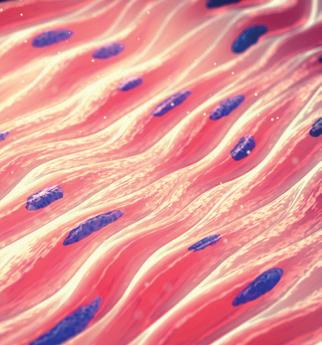

Thickening and spasms of artery wall
Wall tension increased: Blood pressure increased. No relaxation
OPTIMUM DIETRY INTAKE OF ESSENTIAL NUTRIENTS:
Vitamin C
Vitamin B1-6
Vitamin B12
Vitamin D3 Folate
Calcium
Magnesium
L-Arginine
and others
REFILLS
The connective tissue structure of the blood vessel wall re mains intact and stable.
Alternation of tension and relaxation in healthy arteries
When the tension of the artery wall is low, blood pressure remains normal. When the tension increases, blood pressure also increases.
HELPS PREVENT AND CORRECT HIGH BLOOD PRESSURE
Accelerated buildup of atherosclerotic deposits
HEART ATTACKS AND STROKES
HELPS PREVENT AND CORRECT
HELPS PREVENT
© Dr. Rath Health Foundation 13.
Fig. 3: The causes, prevention and adjunct treatment of high blood pressure
Another important regulator of arterial wall tension is the hormone angiotensin. Excessive production of this hormone leads to narrowing of the arterial lumen and increased blood pressure. Angiotensin-converting enzyme (ACE) converts inactive angiotensin I to the active hormone angiotensin II, which constricts blood vessel walls and increases blood pressure. Certain micro -
nutrients, such as vitamin C, can reduce ACE activity and help lower elevated blood pressure.
The Dr. Rath Research Institute has developed and studied a micronutrient combination that significantly affects both of these mechanisms. The research on this specific combination is detailed in the following pages.
SCIENTIFIC FINDINGS FROM RESEARCH ON THE NATURAL CONTROL OF HIGH BLOOD PRESSURE
Numerous studies conducted at the Dr. Rath Research Institute have documented the efficacy of specific vitamins, minerals, various plant compounds, and other essential cellular nutrients, in the management of high blood pressure. These studies specifically apply the principle of nutrient synergy, the mutually beneficial effect of interactions between selected nutritional compounds. In synergy, the proper selection and combination of individual natural components results in enhanced health benefits compared with the effects of individual nutrients. In this way, the effectiveness of cellular nutrient combinations can be maximized without the need for excessive doses of any single nutrient. Micronutrients such as vitamins C and D, the B complex, arginine and
magnesium, supported by certain plant extracts, play a critical role in maintaining the elasticity and flexibility of blood vessels, thereby supporting optimal blood pressure levels. Certain plant extracts, such as celery seed extract, are effective in inducing vascular relaxation, leading to vasodilation and consequent reduction in blood pressure. Remarkably, these mechanisms parallel those of certain pharmaceutical drugs, but without the associated side effects. Unlike many antihypertensive drugs, which can excessively lower blood pressure by reducing blood flow to the brain, often resulting in dizziness and fatigue, these natural approaches aim for a more balanced regulation without such side effects.
14.
RESEARCH CONFIRMS THE EFFICACY OF MICRONUTRIENTS IN CONTROLLING BLOOD PRESSURE
In in vitro studies, a team of scientists at the Dr. Rath Research Institute has shown that a combination of vitamins, minerals, and specific plant-derived bioflavonoids can inhibit the angiotensin II-dependent contraction of cultured aortic smooth muscle cells that regulate the dilation and constriction of arterial walls. This mechanism is targeted by a class of drugs known as ACE inhibitors. Figure 4 indicates that a specific combination of cellular nutrients can increase the diameter of blood vessels, thereby inhibiting blood vessel constriction and allowing a natural decrease in blood pressure.
Micronutrient combination inhibits contraction of cultured aortic smooth muscle cells
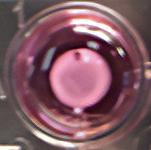
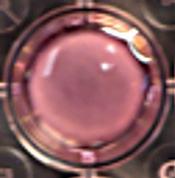
Smooth muscle cells from human aorta embedded in gel (see opaque pink circle) are fully contracted without the cellular nutrient combination (100% contraction).
The same smooth muscle cells relax dramatically by about 80% in the presence of cellular nutrients.
A synergistic combination of micronutrients affects multiple cellular mechanisms, resulting in multiple health benefits. Our in vivo studies in young mice that developed diabetes as a result of a high-fructose diet showed that a specific cellular nutrient combination was able to reduce blood pressure, but also had beneficial effects on cholesterol and blood glucose levels.
A pilot clinical study evaluated the effect of a specific combination of micronutrients on individuals between the ages of 32 and 60 who were clinically diagnosed with essential hypertension. After 6 months of taking these cellular nutrients, 70% of the patients showed a significant improvement in their blood pressure levels. On average, their blood pressure decreased by 15%-16%, with a final mean of 138/83 mmHg, which is lower than the WHO’s definition of hypertension. The combinations of micronutrients that have been developed by scientists at the Dr. Rath Research Institute are constantly being improved. The latest research has resulted in a combination of natural plant extracts and specific cellular nutrients that have proven to be particularly successful in regulating key mechanisms involved in the normalization of high blood pressure. This combination, which has received US and international patents, includes vitamin C, vitamin D3, B vitamins,
© Dr. Rath Health Foundation 15.
Fig. 4: Smooth muscle cells in a test tube.
calcium, magnesium, L-arginine, and extracts of green tea, cloves, grapes, and celery seeds.
This cellular nutrient combination demonstrated a remarkable ability to increase the production of the relaxing factor nitric
oxide (NO) in the endothelial cells of human arteries. This increasing effect was proportional to the dose of micronutrients administered. Significantly, at higher concentrations, the production of NO exceeded twice the levels recorded in control cells (Graph 1).
THE COMBINATION OF MICRONUTRIENTS INCREASES THE PRODUCTION OF THE ‘RELAXING FACTOR’ NITRIC OXIDE IN HUMAN AORTIC CELLS
‘relaxing
100% (control cells) to 220%.
blood vessel walls.

16.
250 0 NO production (% of control) 200 150 100 50 220% 5 2.5 Control 0 Concentration of cellular nutrients (mcg/ml)
Graph 1: I n the presence of cellular nutrients, the production of the
factor’ nitric oxide (NO) in human aortic cells more than doubled. It increased from
The secretion of NO promotes the relaxation of
In addition, this combination of cellular nutrients effectively reduced ACE activity, acting like a natural ACE inhibitor. This mechanism plays a critical role in lowering
elevated blood pressure (Graph 2). Inhibition of ACE activity promotes relaxation of blood vessel walls, which is important for lowering blood pressure.
THE COMBINATION OF MICRONUTRIENTS DECREASES
ANGIOTENSIN-CONVERTING ENZYME ACTIVITY
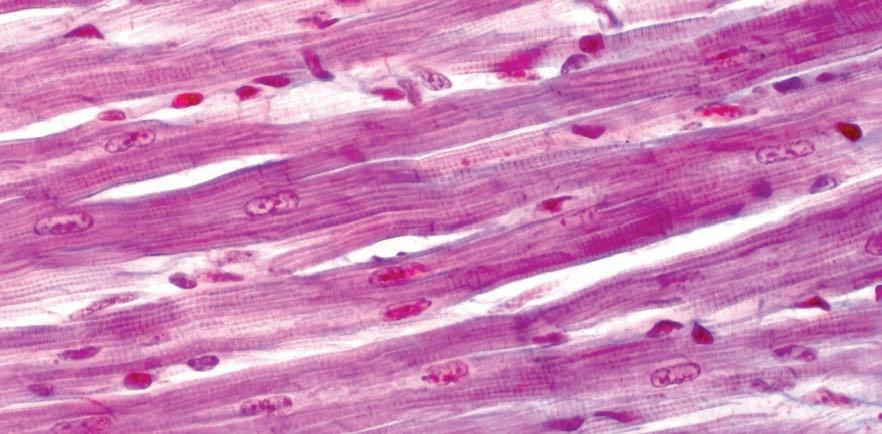
© Dr. Rath Health Foundation 17.
100 0 ACE activity % of control 80 60 40 20 50 13 Control 0 120 3 200
80% inhibition Concentration of cellular nutrients (mcg/ml)
Histology of human heart muscle under the light microscope
>
Graph 2: I n the presence of an increasing concentration of cellular nutrients, the activity of ACE in human aortic cells was significantly reduced by more than 80%.
TIPS FOR REDUCING THE RISK OF HIGH BLOOD PRESSURE
REGULAR EXERCISE
Physical activity helps reduce the risk of high blood pressure through several mechanisms. It improves heart function, making the heart more efficient at pumping blood, which reduces pressure on the arteries and consequently lowers blood pressure. Exercise also helps to manage weight and to reduce stress hormones, all of which contribute to maintaining healthy blood pressure levels.
EATING A HEALTHY DIET
A diet rich in fruits, vegetables, whole grains, and low in fat provides essential nutrients and fibers minimizing factors that contribute to hypertension. It helps to control blood pressure by providing vitamins (vitamin C) and minerals such as potassium and magnesium, which support healthy blood vessel structure and function and regulate blood pressure levels. Additionally, reducing sodium intake by avoiding processed foods and limiting salt helps to lower blood pressure.
MANAGING STRESS
Stress management techniques, such as mindfulness, meditation, or regular relaxation practices, help reduce the risk of high blood pressure by decreasing the body’s stress response. Chronic stress can raise blood pressure by increasing hormones such as cortisol and adrenaline. Managing stress helps regulate these hormones, promoting healthier blood pressure levels and reducing stress on the cardiovascular system.
NUTRITIONAL SUPPLEMENTATION
If you are at a high risk for hypertension or already have it, consider supplementing your diet with scientifically developed and tested micronutrient combinations. The unique patented formulation described here gives you the confidence that the micronutrients you are taking cooperate with each other for maximum health effect and safety.
MAINTAINING HEALTHY WEIGHT
Keeping your weight at an optimal level allows you to reduce stress on your heart and lower the risk of high blood pressure. If you are overweight, losing pounds can also reduce the likelihood of insulin resistance, which is linked to elevated blood pressure.
QUITTING SMOKING
Quitting smoking reduces the risk of high blood pressure because tobacco and its constituents directly increase blood pressure and heart rate. When you quit smoking, the body’s blood vessels gradually return to a healthier state, reducing stress on the heart and lowering the risk of developing hypertension-related complications.
REDUCING ALCOHOL CONSUMPTION
Excessive alcohol increases blood pressure by affecting the nervous system and constricting blood vessels. Reducing alcohol consumption helps regulate blood pressure and reduces stress on the heart.


18.
Taking a break in nature and being physically active can benefit your health and reduce stress levels. Remember, exercise should be enjoyable, not a chore!


© Dr. Rath Health Foundation 19.
INFORMATION ON INDIVIDUAL INGREDIENTS IN THE MICRONUTRIENT COMBINATION
Vitamin C is an essential nutrient for the production of collagen and the vascular matrix, ensuring the strength and flexibility of blood vessels. It helps to protect blood vessels from oxidative damage and stimulates the synthesis of nitric oxide, which is known to relax blood vessel walls. The human body does not produce this vitamin.
B vitamins are essential compounds for bioenergy production in all cells and organs in the body, including cardiovascular cells. They have a positive effect on systolic blood pressure and protect against oxidative stress. The vitamin B complex can neutralize toxic homocysteine, which is considered a risk factor for atherosclerosis and other cardiovascular diseases.
Magnesium and calcium are essential minerals for optimum contraction of smooth muscle cells and are important in reducing tension in blood vessel walls, thereby lowering high blood pressure.
Grape extract has antioxidant and antiinflammatory properties and effectively inhibits platelet aggregation, a key process in blood clotting. While platelet aggregation is essential for preventing
excessive bleeding, it can also contribute to the formation of unwanted blood clots, which may lead to conditions such as thrombosis or embolism. Grape extract also helps to lower blood pressure by stimulating the production of nitric oxide.
Clove extract also has antioxidant properties. It is known to optimize blood pressure and improve heart health.
Celery seed extract promotes the elasticity and relaxation of blood vessels, exerting a vasodilatory effect that helps to lower blood pressure. In addition, it supports increased blood flow to the brain, potentially reducing the risk of stroke.
Arginine increases the production of the relaxing factor nitric oxide.
Catechins found in green tea have a vasodilatory effect that improves blood circulation. Their role in preventing plaque buildup in the blood vessels and antioxidant effects significantly reduce the likelihood of high blood pressure and other cardiovascular problems.
20.
While lifestyle changes, including a healthy diet, exercise, and avoidance of excessive alcohol consumption and smoking, are critical in the prevention of any disease, it is equally important to incorporate scientifically developed micronutrient combinations into the daily regimen. Regular supplementation with
specific combinations of vitamins, minerals, and plant extracts can be successful both as an adjunct to conventional approaches and as a stand-alone strategy for natural prevention and control of hypertension.*
* This statement has not been evaluated by the American Food and Drug Administration.

Fresh, healthy food contains important vitamins, minerals, and plant compounds. A diet rich in fruit and vegetables can help protect against cancer, diabetes, and heart disease.
© Dr. Rath Health Foundation 21.
PATENTED TECHNOLOGY TO HELP NORMALIZE HIGH BLOOD PRESSURE
The United States Patent and Trademark Office, an official government agency, has recognized the novelty of this research by granting a patent (US 11,666,643B1). This patent is a testament to the uniqueness of this health technology, confirming its exclusive micronutrient composition and remarkable effectiveness that is unparalleled in the world.
Among others, the following statements were authorized to be made in connection with this micronutrient formulation:
• The “micronutrient composition prevents, treats and delays high blood pressure ...“
REFERENCES
American Heart Association. (2023, October 17). Understanding blood pressure readings.
https://www.heart.org/en/health-topics/ high-blood-pressure/understanding-bloodpressure-readings
J. Cha et al. Nutritional improvement of metabolic syndrome parameters in immature fructose-fed wild-type mice. Mol Med Rep. 2011;4(6):1053-9.
M. Rath et al. Cellular Nutrients in High Blood Pressure. Cellular Health Communications Vol 1, No. 1, 2001.
• This micronutrient composition can be administered “to relax a smooth muscle cell for lowering high blood pressure.”
US Patent No. US 11,666,643B1
Micronutrient combination to reduce blood pressure
Inventors:

FOR FURTHER INFORMATION GO TO:
www.dr-rath-education.org
V. Ivanov et al. Bioflavonoids Effectively Inhibit Smooth Muscle Cell-Mediated Contraction of Collagen Matrix Induced by Angiotensin II. J Cardiovasc Pharmacol. 2005;46(5):570-6.
World Heart Federation. (2023, August 9). Deaths from cardiovascular disease surged 60% globally over the last 30 years: ReportWorld Heart Federation.
https://world-heart-federation.org/news/deathsfrom-cardiovascular-disease-surged-60-globally-over-the-last-30-years-report/
22.
Aleksandra Niedzwiecki, Matthias Rath, Vadim Ivanov, Waldemar Sumera Publishing
June 6, 2023
date:
CELLULAR MEDICINE

Cellular Medicine is based on the simple fact that all organs in our body are made up of cells that need specific micronutrients for optimal function. Regular supply of micronutrients forms the basis for healthy functions of our body organs and the entire body. Chronic, long-lasting deficiencies or a low intake of vitamins, minerals, amino acids and other micronutrients is the most common cause of diseases such as cardiovascular disease, diabetes, osteoporosis, cancer and many others.
Cellular Medicine applies a nutrient synergy approach in designing and scientifically testing specific nutrient combinations to increase their efficacy and range of health benefits. This approach proves that desired health outcomes cannot be achieved by one vitamin or nutrient alone, but only by a specific combination of many micronutrients working together.
Therefore, in addition to a healthy diet and lifestyle, a regular daily supplementation of properly selected vitamins and other micronutrients is necessary to maintain optimal health.
© Dr. Rath Health Foundation 23.
THE DR. RATH RESEARCH INSTITUTE
Located in California, USA, the Dr. Rath Research Institute is a hub for renowned scientists in the fields of medicine, biochemistry, and nutrition. Led by Dr. Aleksandra Niedzwiecki, this team is conducting groundbreaking research in natural health, exploring the synergies of nutrients, and developing innovative health strategies to prevent and control various diseases. The institute builds on Dr. Rath’s groundbreaking discoveries in major health areas such as cardiovascular disease and cancer. These findings are routinely disseminated through publications in global scientific journals.

www.drrathresearch.org

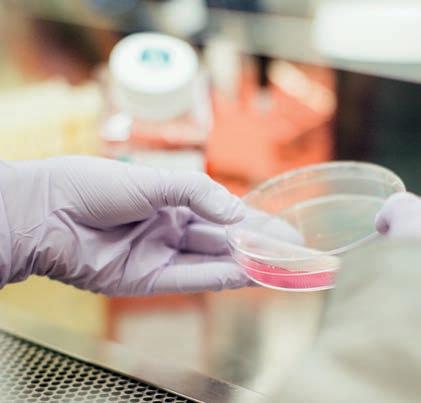
24.
RESEARCHERS




Dr. Aleksandra Niedzwiecki
Currently the Director of Research at the Dr. Rath Research Institute, Dr. Niedzwiecki is a leading biomedical researcher in the development of nutrient synergy approaches in various aspects of health and disease. Her work in the areas of cardiovascular health, cancer and infections has won her recognition for her research into the biochemical link between disease and nutrients.
Dr. Vadim Ivanov
Dr. Ivanov holds a medical degree from the Tomsk Medical Academy in Tomsk, Russia, and a doctorate degree in biochemistry from the National Cardiology Center in Moscow, Russia. He and his team at the Dr. Rath Research Institute have been conducting scientific studies on the benefits of micronutrients in important aspects of health, such as cardiovascular disease, infectious diseases, and various metabolic disorders. The results of these studies have been featured in numerous publications and have been granted national and international patents.
Waldemar Sumera, M.Sc.
Waldemar Sumera graduated from the Jagiellonian University in Cracow, Poland. At the Dr. Rath Research Institute he is engaged in microbiology research focused on the application of natural compounds in controlling cellular mechanisms affected by bacterial and viral infections.
Dr. Matthias Rath
Dr. Rath is a world-renowned physician and scientist known for his pioneering research in natural and cellular health. He is the founder of the scientific concept of Cellular Medicine –the systematic introduction into clinical medicine of the biochemical knowledge of the role of micronutrients as biocatalysts in a multitude of metabolic reactions at the cellular level.
Disclaimer
This booklet is not intended as a substitute for the medical advice of a physician. The reader should regularly consult a physician in matters relating to his or her health and particularly in respect to any symptoms that may require diagnosis or medical attention.
© Dr. Rath Health Foundation 25.
FURTHER INFORMATION MATERIAL

Please feel free to order further brochures from this series by telephone: 0031-457-111 222 or by email: info@dr-rath-foundation.org
All publications are also available online at: www.issuu.com/drrath
STOPPING VIRUSES NATURALLY

This booklet explores the development of influenza infections and other viral diseases that occur more frequently during the colder seasons. It describes how a precisely formulated and scientifically validated combination of micronutrients can impact various aspects of infection, including boosting the immune system, increasing the body’s resistance, and targeting infectious pathogens.
MICRONUTRIENTS FOR A HEALTHY BRAIN AND MENTAL FUNCTIONS

Our brain is a complex organ. It controls all our body’s functions, such as motor skills, vision, breathing, also our mental alertness, thoughts, memory, emotions, and so much more. Its optimal function is essential for our general health and longevity. Maintaining brain health also involves reducing risk factors and providing essential nutrition to our brain cells, to help to protect, maintain, and improve the brain’s complex and multiple functions.
FIBRES

FIBRES
Although dietary fibre is indigestible for the human body, it has a positive influence on health. By directly and indirectly influencing various metabolic processes, fibre can protect against the development of certain diseases or contribute to their treatment. Consequently, dietary fibre should always be taken into account as a component of a health-promoting, wholesome and balanced diet.
MICRONUTRIENTS FOR HEALTHY EYES

The eye is one of the most sophisticated organs in the human body. It can detect colors, light and darkness, and by capturing millions of images, it allows us to see the world around us. Taking care of our eyes is really important to our vision and overall health. By understanding the role and importance of micronutrients for eye health, we can take proactive steps to protect our vision and maintain healthy eye function to improve our quality of life.
26. Dr. Rath Health Foundation Stopping naturally Scientificallydevelopedmicronutrient combinationsasaneffectivestrategyto naturallyfightviralinfections
VIRUSES
Dr. Rath Health Foundation HEALTHY EYES Micronutrients for Scientificallydevelopedmicronutrient combinationasaneffectivestrategy toprotectvisionnaturally
Dr. Rath Health Foundation HEALTHY BRAIN and mental functions Micronutrients for a Dr. Rath Research Institute, San Jose, CA
Dr. Rath Health Foundation
Art. Nr. 6?????
Art. Nr. 6?????
Art. Nr. 6?????
Art. Nr. 6?????
© Dr. Rath Health Foundation 27.
Dr. Rath Health Foundation
Tesla 1
6422 RG Heerlen Netherlands
Tel.: 0031-457-111 222
Fax: 0031-457-111 119
Email: info@dr-rath-foundation.org
Internet: www.dr-rath-foundation.org
Read us on ISSUU

#1714/01-020224-EN



























